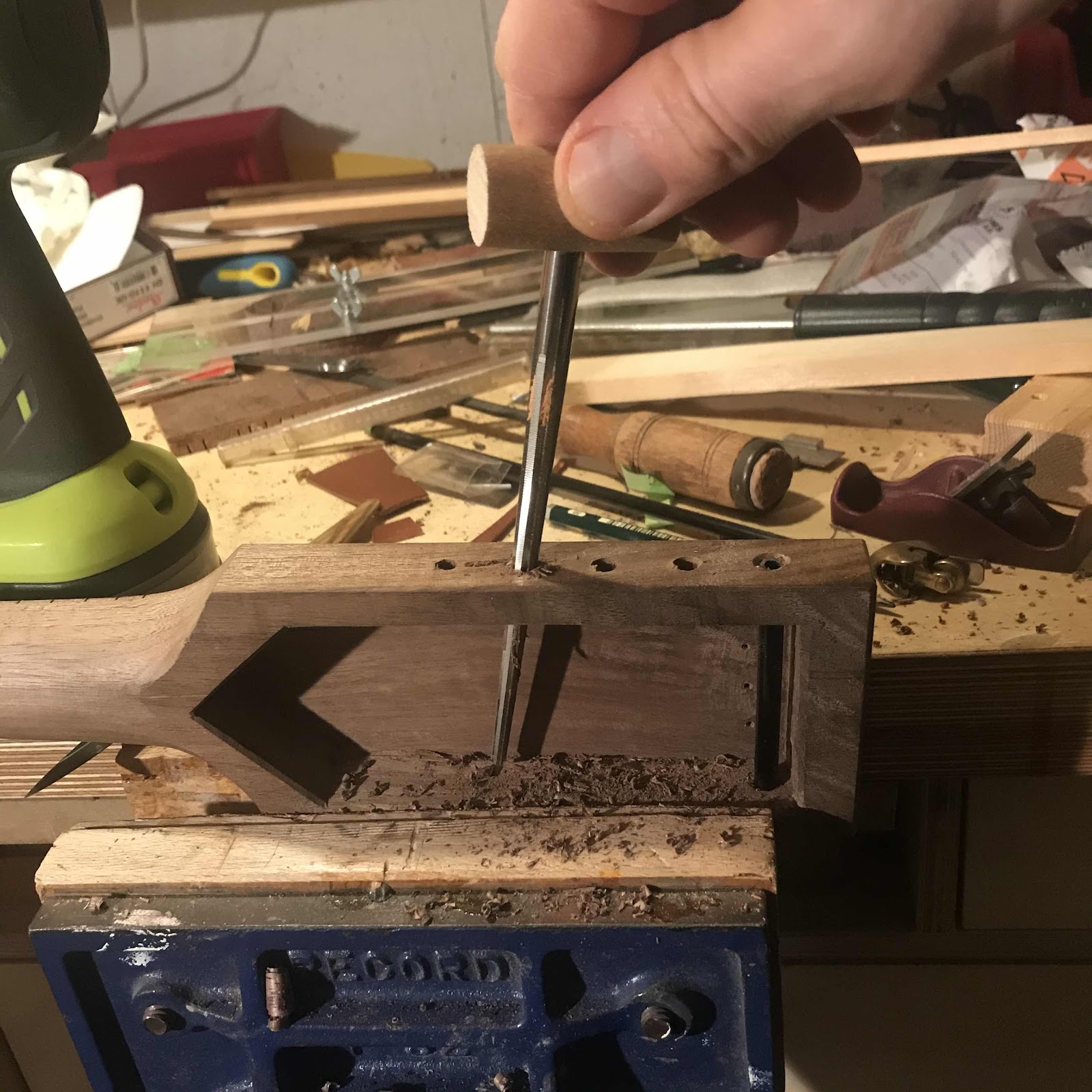Then I ream the holes. It’s a bit too easy to fudge the angle when reaming so I check with the guide block a few times during reaming.
A keen reader of the blog remembers why the reamer has such a short, sorry handle. For un-keen readers; check the post in which I finished the uke for Chris recently.

I can’t ream quite as much as I do in a headstock since the tip of the tool hits the opposite wall. So I need to shave the pegs a bit more than usual. Luckily I have a wonderful peg shaver from Juzek tools, bought form metmusic.com.

All four pegs were straight in the grain and it went well. I’m used to at least one of them splitting and more or less disintegrating.
I can’t ream quite as much as I do in a headstock since the tip of the tool hits the opposite wall. So I need to shave the pegs a bit more than usual. Luckily I have a wonderful peg shaver from Juzek tools, bought form metmusic.com.
All four pegs were straight in the grain and it went well. I’m used to at least one of them splitting and more or less disintegrating.
Under the shaver the shavings stick out like bristles on a brush.

And voilá. Here they are next to the carbon fibre tube that turns the strings around. Maybe I spaced the pegs a bit too close together. I will increase the distance a wee bit next time.

And voilá. Here they are next to the carbon fibre tube that turns the strings around. Maybe I spaced the pegs a bit too close together. I will increase the distance a wee bit next time.